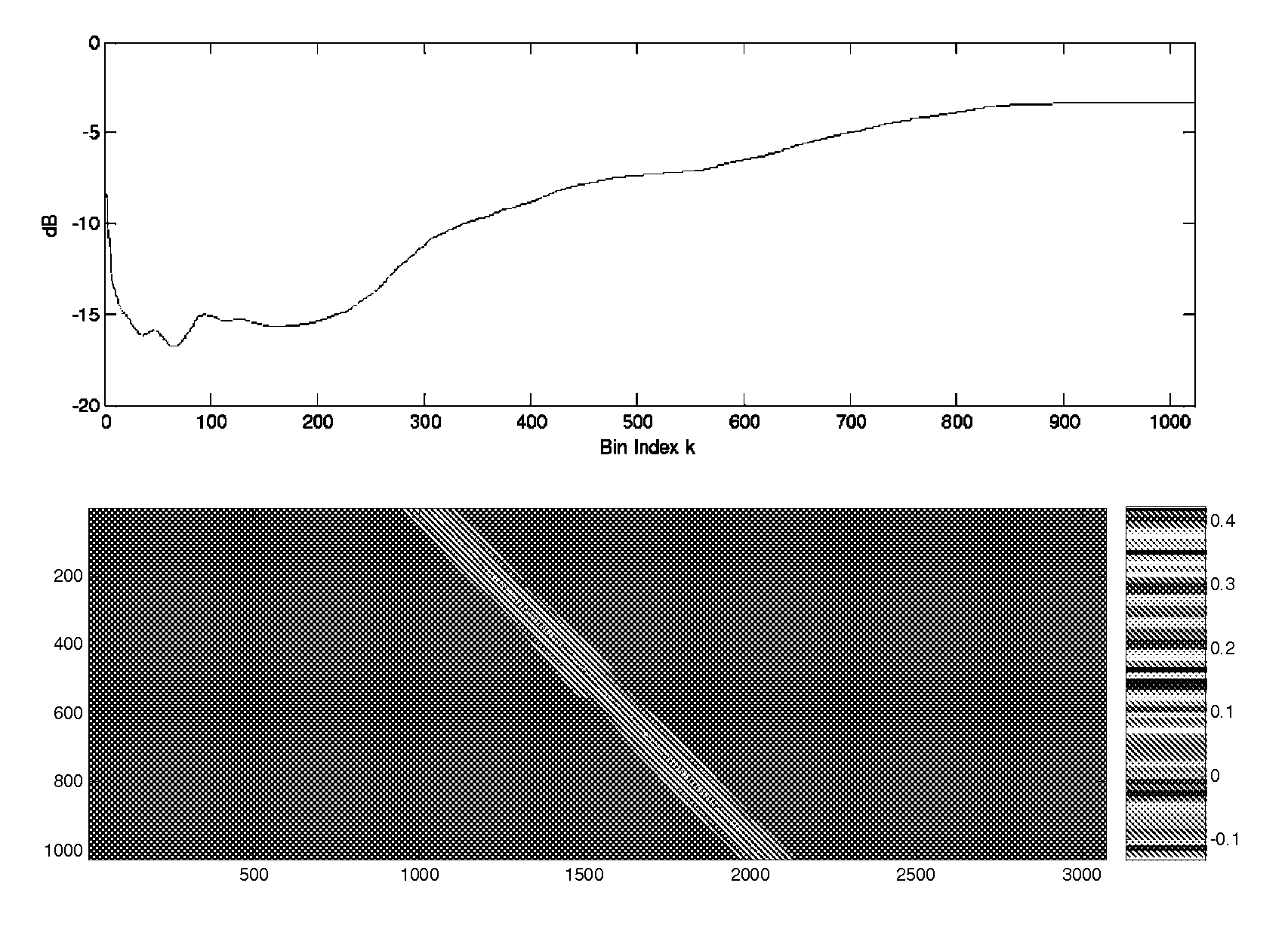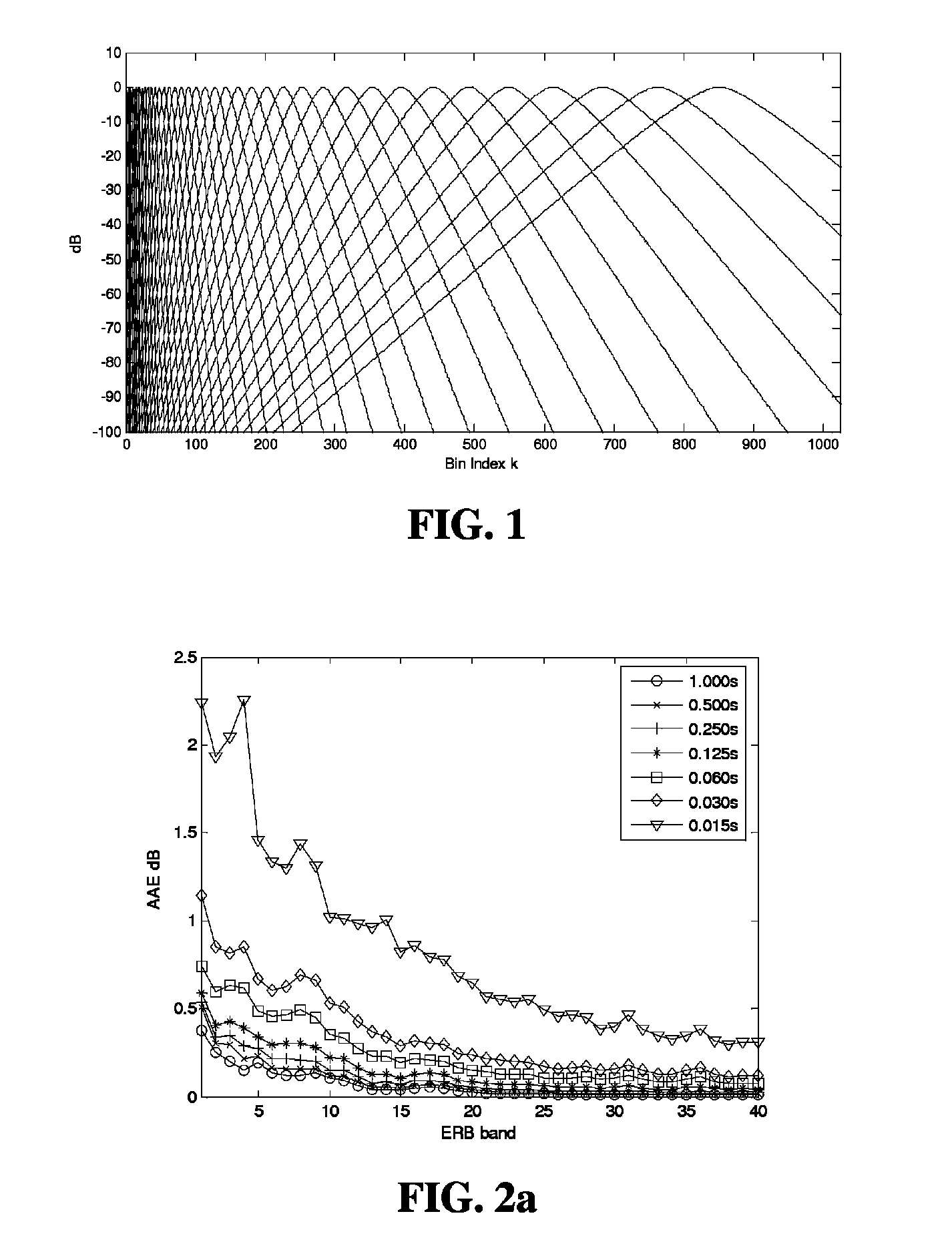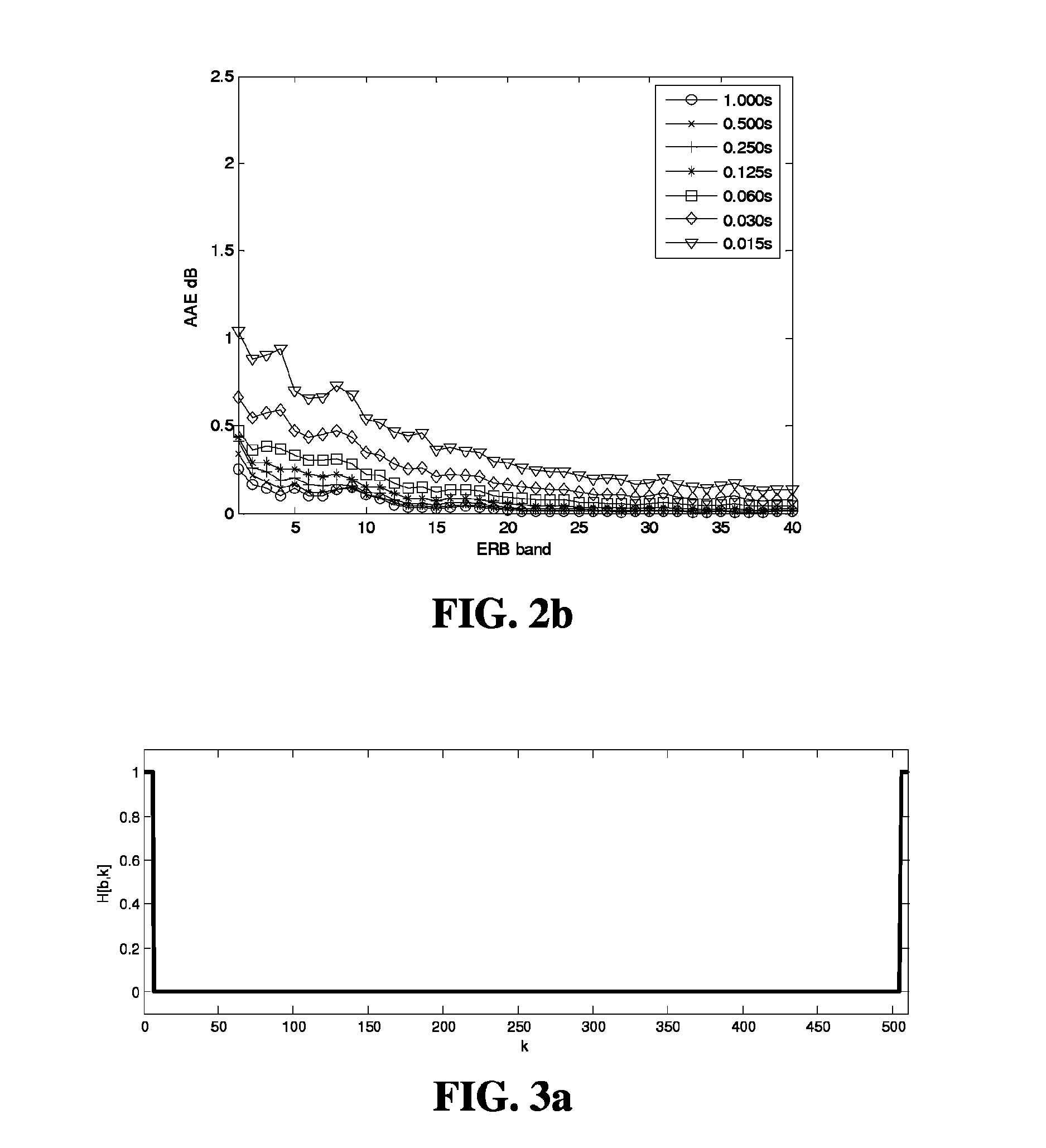Audio signal loudness measurement and modification in the MDCT domain
a technology of audio signal and loudness measurement, applied in the field of audio signal processing, can solve the problems of difficult use of this transform, inability to accurately represent the steady state nature, and complex psychoacoustic methods, and achieve the effects of small average error, small average error, and reduced integration tim
- Summary
- Abstract
- Description
- Claims
- Application Information
AI Technical Summary
Benefits of technology
Problems solved by technology
Method used
Image
Examples
Embodiment Construction
[0105]Aspects of the present invention provide for measurement of the perceived loudness of an audio signal that has been transformed into the MDCT domain. Further aspects of the present invention provide for adjustment of the perceived loudness of an audio signal that exists in the MDCT domain.
Loudness Measurement in the MDCT Domain
[0106]As was shown above, properties of the STMDCT make loudness measurement possible and directly using the STMDCT representation of an audio signal. First, the power spectrum estimated from the STMDCT is equal to approximately half of the power spectrum estimated from the STSDFT. Second, filtering of the STMDCT audio signal can be performed provided the impulse response of the filter is compact in time.
[0107]Therefore techniques used to measure the loudness of an audio using the STSDFT and STDFT may also be used with the STMDCT based audio signals. Furthermore, because many STDFT methods are frequency-domain equivalents of time-domain methods, it follo...
PUM
 Login to view more
Login to view more Abstract
Description
Claims
Application Information
 Login to view more
Login to view more - R&D Engineer
- R&D Manager
- IP Professional
- Industry Leading Data Capabilities
- Powerful AI technology
- Patent DNA Extraction
Browse by: Latest US Patents, China's latest patents, Technical Efficacy Thesaurus, Application Domain, Technology Topic.
© 2024 PatSnap. All rights reserved.Legal|Privacy policy|Modern Slavery Act Transparency Statement|Sitemap



